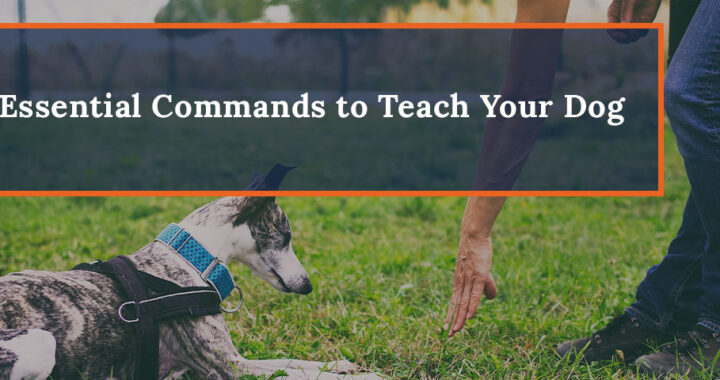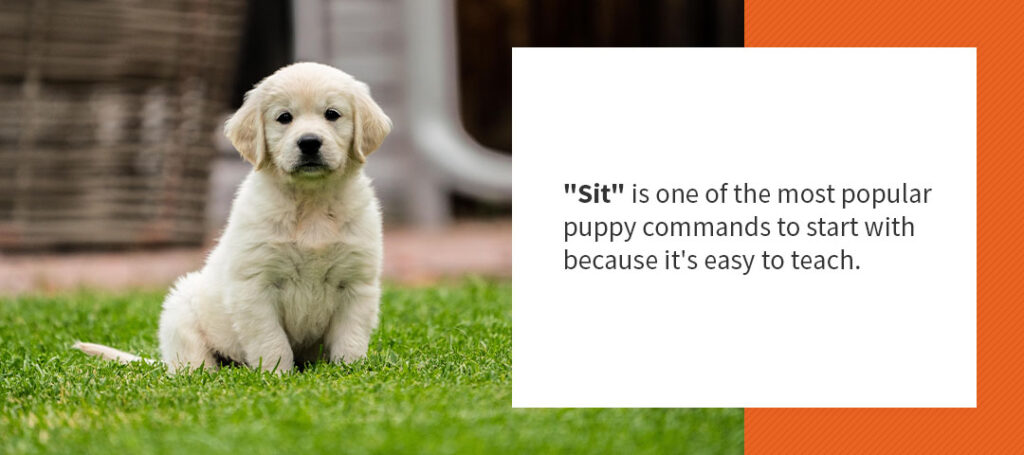One of the great things about dogs is that they’re so smart. While it might not seem like your dog is a genius when they’re drooling or chasing their tail, dogs have an incredible ability to learn. These furry friends understand consequences and can respond to dozens of different verbal cues. All it takes is some patience and perseverance to gain your dog’s trust and obedience.
If you’ve never trained a dog before, you might not know where to start. The best way to teach your dog commands is to build off simple commands and stay consistent. Learn some basic dog training commands to start working with your dog today.
General Rules of Thumb
Be sure to understand a few rules of thumb before you get started. Here are some guiding principles to help you master common dog commands:
- Remember practice makes perfect: Set aside a few minutes two or three times per day to practice commands with your dog. Staying consistent will help your dog remember what they’ve learned over time.
- Stick with positive reinforcement: Dogs can get frustrating, especially when you find them chewing expensive furniture or relieving themselves on the carpet. Even still, steer clear of negative reinforcement, such as yelling or hitting. Your anger will only damage your relationship with your dog, making it harder for them to trust you. It can even lead to fear-based aggression. When bad behavior occurs, redirect. Reward positive behavior with treats and praise.
- Reward the right behaviors: You’ll have to be quick with your rewards. If you take too long to offer praise, your dog won’t know what the praise is for. For example, if you tell your dog to sit but give them the treat when they stand back up, they won’t understand that sitting is what has earned them a reward.
- Keep command phrases consistent: Your dog will get confused if you say “walk close” one day and “heel” the next. Always keep command phrases short, consistent and straightforward. Stick with the same dog training words each time.
Remember these rules of thumb as you begin training your dog. They’ll help create long-lasting desired results while building a relationship of mutual trust. With these things in mind, try some of the following dog training commands to teach your dog.
1. Sit
“Sit” is one of the most popular puppy commands to start with because it’s easy to teach. You can use a technique called “luring” to encourage your dog to sit. All you have to do is hold a treat in front of your dog and then slowly move it back behind them. As they follow it, they’ll sit. Say “sit” and give your dog their treat! After a few tries, you can do the same hand motion without a treat in your fist. Eventually, you’ll be able to remove the gesture and give only the verbal command.
2. Stay
Once you and your dog have mastered “sit,” you can move onto “stay.” For this command, have your dog sit. Then, back away with one hand up, palm facing outwards. When your dog sits still, come back to them and give them the treat. Start easy, only backing away a tiny bit and having your dog hold the “stay” position for a moment. You can increase the duration and distance over time.
3. Drop It
The “drop it” command can come in handy when your dog starts chewing on your favorite pair of pants or your TV remote. It’s simple enough — you’ll need two desirable items, such as a toy and a treat. Then, you’ll follow these steps:
- Give your dog the toy while holding a treat in your hand.
- Say “drop it” and show them the treat.
- Give them the treat when they drop the toy.
4. Down
Learning to lay down at your command can help your dog stay calm in real-life stressful situations, such as rides in the car or while at the vet. To teach the “down” command, hold a treat in front of your dog’s face. Then, bring it down to the floor. As soon as your dog’s belly hits the ground, say “down” and give them the treat.
5. Come
“Come” is another essential dog command, as it could save your dog’s life in a dangerous situation. You’ll need to put your dog’s leash on and stand a few feet away. Then, tug gently on the leash and say, “come.” When your dog comes to you, give them a treat. After some practice, you’ll be able to prompt your dog to come without the leash.
6. Off
If your dog jumps on people or furniture, the “off” command will let you curb this behavior. When your dog has their paws on the couch or counter, hold a treat in your hand and say, “off.” Once their paws are on the floor, give them the treat. You might want to keep treats stashed in convenient places so you can grab one as soon as you see unwanted behavior.
7. Leave It
Dogs are curious — they often stick their noses in places they shouldn’t. When that happens, the “leave it” command is useful. To teach your dog:
- Put one treat in each of your hands.
- Show your dog one treat and hide the other behind your back.
- Keep the treat your dog knows about in a closed fist.
- Say “leave it” until your dog loses interest and backs off.
- Once they stop trying to get the treat they know about, give them the secret one!
8. Heel
“Heel” is an essential dog command for walks. A dog that pulls on a leash could put both you and them in danger. Focus on proper walking habits each time you go out. You’ll have to keep the leash short at first. Keep repeating the word “heel” throughout the walk and giving your dog small treats when they walk by your side. The key is to make walking by your side as rewarding as possible. From time to time, practice the “sit” command during your walk, as well.
Get the Best Training for Your Dog by Contacting Off Leash K9 Training
When it comes to dog training, starting with a few simple commands will be your best bet. Over time, your dog will be an expert at following directions. Starting with commands like “sit” and “stay” will help you build trust and understanding with your dog. Basic commands make everyday life easier so you can enjoy the time spent with your pup. Explore our dog obedience training packages today. To speak with one of our expert dog trainers, fill out our contact form or call us at 443-743-3221!



